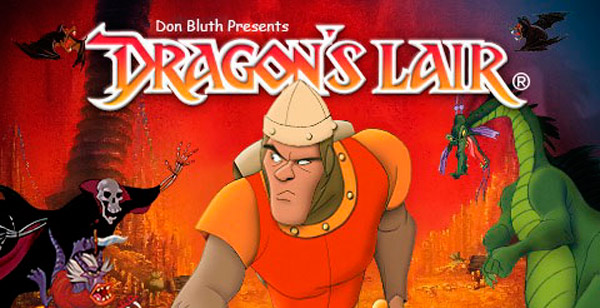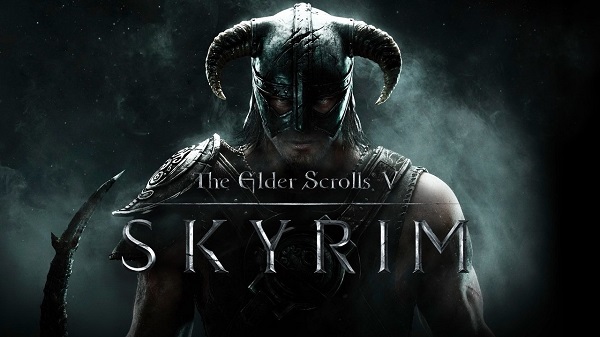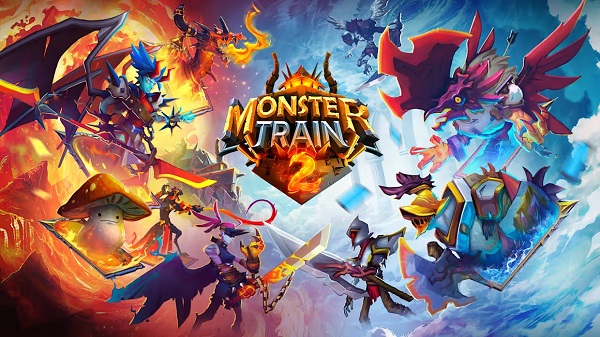Advertisement
Popular Now
Full Motion Video (FMV) games, a niche yet fascinating genre, blend cinematic storytelling with interactive gameplay, relying on pre-recorded video footage featuring real actors to drive narratives. Emerging in the 1980s and peaking in the 1990s, FMV games have experienced a resurgence in recent years, thanks to advancements in streaming technology and a renewed interest in narrative-driven experiences. Unlike traditional games that lean on rendered graphics, FMV titles offer a unique, film-like immersion, where player choices shape the story’s outcome. However, one persistent challenge in FMV games is the seamless integration of narrative and interactivity—a balance that has evolved over decades but remains fraught with technical and creative hurdles. This article delves deeply into the issue of narrative integration in FMV games, exploring its historical development, technical constraints, and creative solutions, while examining how developers have tackled this challenge over time.
 The ambition to create cinematic experiences clashed with technological constraints. Laserdiscs could store high-quality video, but accessing specific clips in response to player inputs was slow and clunky, leading to noticeable pauses. Narrative integration suffered as stories were often linear, with player choices serving as superficial triggers rather than meaningful story drivers. This era set the stage for FMV’s potential but highlighted the core issue: interactivity often felt like an afterthought, bolted onto pre-recorded footage rather than woven into the narrative fabric.
The ambition to create cinematic experiences clashed with technological constraints. Laserdiscs could store high-quality video, but accessing specific clips in response to player inputs was slow and clunky, leading to noticeable pauses. Narrative integration suffered as stories were often linear, with player choices serving as superficial triggers rather than meaningful story drivers. This era set the stage for FMV’s potential but highlighted the core issue: interactivity often felt like an afterthought, bolted onto pre-recorded footage rather than woven into the narrative fabric.
 Games like Phantasmagoria attempted to address this by scripting multiple narrative branches, each filmed separately. However, this approach was resource-intensive, requiring extensive filming to account for every possible player decision. The result was often a compromise: narratives were either overly linear to manage production costs or overly complex, leading to disjointed storytelling when transitions between branches were not seamless.
Games like Phantasmagoria attempted to address this by scripting multiple narrative branches, each filmed separately. However, this approach was resource-intensive, requiring extensive filming to account for every possible player decision. The result was often a compromise: narratives were either overly linear to manage production costs or overly complex, leading to disjointed storytelling when transitions between branches were not seamless.
 By using modular video segments and advanced editing software, developers can now create more dynamic narratives. For example, Immortality allows players to explore a vast archive of footage, with choices subtly guiding the narrative. Yet, even these games struggle with ensuring all branches feel meaningful, as excessive branching can dilute the story’s emotional impact.
By using modular video segments and advanced editing software, developers can now create more dynamic narratives. For example, Immortality allows players to explore a vast archive of footage, with choices subtly guiding the narrative. Yet, even these games struggle with ensuring all branches feel meaningful, as excessive branching can dilute the story’s emotional impact.
 As we move into 2025, FMV games are poised for further evolution, driven by AI, cloud gaming, and virtual reality. These technologies promise to address longstanding integration challenges by enabling real-time video manipulation and more dynamic branching. However, developers must navigate the balance between technological innovation and narrative authenticity to avoid alienating players with overly complex systems.
The future of FMV lies in creating narratives that feel both cinematic and deeply interactive. By leveraging emerging tools, developers can craft stories that adapt fluidly to player choices, potentially redefining the genre. The challenge will be to maintain the human element - authentic performances and compelling stories - while embracing these advancements.
As we move into 2025, FMV games are poised for further evolution, driven by AI, cloud gaming, and virtual reality. These technologies promise to address longstanding integration challenges by enabling real-time video manipulation and more dynamic branching. However, developers must navigate the balance between technological innovation and narrative authenticity to avoid alienating players with overly complex systems.
The future of FMV lies in creating narratives that feel both cinematic and deeply interactive. By leveraging emerging tools, developers can craft stories that adapt fluidly to player choices, potentially redefining the genre. The challenge will be to maintain the human element - authentic performances and compelling stories - while embracing these advancements.
The Dawn of FMV: Ambition Meets Limitation
In the early 1980s, FMV games were a bold experiment, driven by the allure of merging Hollywood-style storytelling with gaming. Arcade games like Dragon’s Lair (1983) used laserdisc technology to deliver animated sequences, captivating players with visuals far beyond the pixelated sprites of the era. However, integrating narrative into these games was rudimentary, as interactivity was limited to quick-time events (QTEs) or basic decision points, often disrupting the story’s flow. The ambition to create cinematic experiences clashed with technological constraints. Laserdiscs could store high-quality video, but accessing specific clips in response to player inputs was slow and clunky, leading to noticeable pauses. Narrative integration suffered as stories were often linear, with player choices serving as superficial triggers rather than meaningful story drivers. This era set the stage for FMV’s potential but highlighted the core issue: interactivity often felt like an afterthought, bolted onto pre-recorded footage rather than woven into the narrative fabric.
The ambition to create cinematic experiences clashed with technological constraints. Laserdiscs could store high-quality video, but accessing specific clips in response to player inputs was slow and clunky, leading to noticeable pauses. Narrative integration suffered as stories were often linear, with player choices serving as superficial triggers rather than meaningful story drivers. This era set the stage for FMV’s potential but highlighted the core issue: interactivity often felt like an afterthought, bolted onto pre-recorded footage rather than woven into the narrative fabric.
Early Technological Barriers
Hardware limitations, such as slow seek times on laserdiscs, meant developers had to pre-plan every possible player action, limiting narrative branching. Games like Space Ace (1984) offered minimal player agency, with choices leading to predetermined outcomes, reducing the sense of narrative control.The CD-ROM Boom: Narrative Expansion
The advent of CD-ROMs in the early 1990s revolutionized FMV games, offering vastly increased storage for video content. Titles like The 7th Guest (1993) and Night Trap (1992) showcased the potential for richer narratives, with live-action performances and complex storylines. Developers could now include multiple branching paths, but the challenge of narrative integration deepened as players expected more meaningful choices. CD-ROMs allowed for longer, higher-quality videos, but the integration of player decisions into these narratives remained problematic. Games often relied on a "choose-your-own-adventure" structure, where choices led to abrupt shifts in video clips, sometimes breaking immersion due to visible transitions or inconsistent pacing. The narrative felt segmented, as developers struggled to balance pre-recorded footage with dynamic player input.Balancing Choice and Continuity
Creating seamless transitions between video segments was a significant hurdle. For example, Night Trap used a surveillance-style interface to mask transitions, but the narrative felt disjointed as players switched between camera feeds. This approach prioritized gameplay over story cohesion, underscoring the difficulty of making choices feel organic within a pre-filmed narrative.The Peak of FMV: Creative Experimentation
By the mid-1990s, FMV games reached their commercial zenith, with titles like Wing Commander III: Heart of the Tiger (1994) and Phantasmagoria (1995) pushing narrative ambition. These games featured high-profile actors and cinematic production values, aiming to blur the line between film and game. Yet, the challenge of narrative integration persisted, as developers grappled with how to make player choices feel impactful without sacrificing story coherence. Games like Phantasmagoria attempted to address this by scripting multiple narrative branches, each filmed separately. However, this approach was resource-intensive, requiring extensive filming to account for every possible player decision. The result was often a compromise: narratives were either overly linear to manage production costs or overly complex, leading to disjointed storytelling when transitions between branches were not seamless.
Games like Phantasmagoria attempted to address this by scripting multiple narrative branches, each filmed separately. However, this approach was resource-intensive, requiring extensive filming to account for every possible player decision. The result was often a compromise: narratives were either overly linear to manage production costs or overly complex, leading to disjointed storytelling when transitions between branches were not seamless.
The Cost of Branching Narratives
Filming multiple story paths was a logistical nightmare. For instance, Wing Commander III required actors like Mark Hamill to perform numerous variations of scenes, inflating budgets and complicating editing. This limited the depth of interactivity, as developers often restricted choices to keep production manageable, highlighting the tension between narrative ambition and practical constraints.The Decline of FMV: Narrative Overreach
By the late 1990s, FMV games began to wane, partly due to the rise of 3D graphics and the perceived failure of FMV to deliver on its narrative promises. Games like The Last Express (1997) were critically acclaimed for their innovative storytelling but commercially unsuccessful, as players grew frustrated with the genre’s limitations. The core issue of narrative integration—making player choices feel meaningful within a pre-recorded framework—remained unresolved. The reliance on pre-filmed content meant that narratives were inherently rigid, with player agency often feeling illusory. Even in ambitious titles, choices frequently led to similar outcomes, undermining the promise of interactivity. This disconnect between player expectation and technical reality contributed to FMV’s decline, as gamers gravitated toward genres offering more dynamic storytelling.Player Expectations vs. Reality
Players expected FMV games to deliver the freedom of choice seen in text-based adventures or early RPGs, but the pre-recorded nature of FMV limited flexibility. For example, The Last Express used rotoscoped animation to enhance visuals, but its complex narrative branches were constrained by the need to pre-film every scenario, leading to a sense of narrative rigidity.The Resurgence: Modern FMV and Digital Solutions
The 2010s marked a revival of FMV games, driven by digital distribution and improved streaming technology. Titles like Her Story (2015) and Telling Lies (2019) reimagined the genre, using non-linear storytelling and innovative interfaces to enhance narrative integration. These games addressed past limitations by leveraging searchable video databases, allowing players to explore narratives organically through keyword searches or timeline manipulation. Modern FMV games shifted focus from linear choice systems to exploratory storytelling, where players piece together narratives from fragmented video clips. This approach mitigated some integration issues by making the narrative itself a puzzle, but it introduced new challenges, such as ensuring players could access all relevant story elements without feeling lost or overwhelmed.Innovations in Narrative Delivery
*Her Story* revolutionized FMV by allowing players to search a database of video clips using keywords, creating a sense of agency without requiring extensive branching. However, this method risked narrative fragmentation, as players could miss critical clips if their searches were too narrow, highlighting the ongoing challenge of guiding players through a pre-recorded story.The Role of Branching in Modern FMV
Modern FMV games like The Complex (2020) and Immortality (2022) have embraced complex branching narratives, made feasible by digital tools that streamline video production and editing. These games use sophisticated scripting to map player choices to video segments, creating a more seamless integration of narrative and interactivity. However, the challenge remains: how to balance the number of branches with production costs and narrative coherence. By using modular video segments and advanced editing software, developers can now create more dynamic narratives. For example, Immortality allows players to explore a vast archive of footage, with choices subtly guiding the narrative. Yet, even these games struggle with ensuring all branches feel meaningful, as excessive branching can dilute the story’s emotional impact.
By using modular video segments and advanced editing software, developers can now create more dynamic narratives. For example, Immortality allows players to explore a vast archive of footage, with choices subtly guiding the narrative. Yet, even these games struggle with ensuring all branches feel meaningful, as excessive branching can dilute the story’s emotional impact.
Managing Narrative Scope
Developers now use data-driven approaches to predict player choices, filming only the most likely scenarios. This reduces costs but can limit narrative depth, as less common paths may be underdeveloped. Balancing scope and impact remains a key challenge in modern FMV design.Technical Advances: Seamless Transitions
Advancements in video compression and streaming have significantly improved narrative integration in FMV games. Modern engines can preload video segments, reducing transition lag and creating a smoother experience. Games like Ikenfell (2020) and Five Dates (2020) use these technologies to deliver near-instantaneous switches between narrative branches, enhancing immersion. However, seamless transitions require careful planning. Developers must anticipate player choices and preload relevant clips, which can strain memory resources on lower-end devices. Additionally, maintaining visual and auditory consistency across branches remains challenging, as slight variations in lighting or sound can break immersion.The Role of AI in Transitions
AI-driven tools are emerging to assist with narrative integration, predicting player behavior and optimizing video loading. For instance, machine learning can analyze player data to prioritize certain branches, but this technology is still nascent and can introduce errors if not carefully calibrated.Player Agency: The Heart of Narrative Integration
At its core, narrative integration in FMV games hinges on player agency—the sense that choices genuinely shape the story. Modern games strive to make every decision feel impactful, using techniques like dynamic dialogue systems or consequence tracking. Titles like The Quarry (2022) excel at this, offering multiple endings based on player choices, but even these games face limitations in ensuring all outcomes feel distinct. The challenge lies in balancing agency with narrative coherence. Too many choices can overwhelm players or lead to inconsistent storytelling, while too few can make the experience feel scripted. Developers must carefully craft narratives that offer meaningful divergence without sacrificing emotional resonance or logical consistency.Techniques for Enhancing Agency
Modern FMV games use several strategies to enhance agency:- Dynamic Dialogue: Systems that adapt dialogue based on prior choices, as seen in The Complex.
- Consequence Tracking: Mechanisms that carry choices across scenes, ensuring long-term impact.
- Illusion of Choice: Subtle variations that make players feel in control, even when outcomes converge.
The Cultural Impact: FMV as a Storytelling Medium
FMV games have evolved into a legitimate storytelling medium, bridging film and gaming. They appeal to audiences seeking cinematic experiences with interactive elements, as seen in Bandersnatch (2018), Netflix’s interactive film. However, the challenge of narrative integration affects their cultural perception, as critics often debate whether FMV games are “true” games or merely interactive movies. This debate underscores the genre’s unique position. By prioritizing narrative integration, developers can elevate FMV games beyond gimmicks, creating experiences that rival traditional films in emotional depth. Yet, the genre must continue to innovate to overcome skepticism and prove its artistic merit.Redefining Interactive Storytelling
FMV games challenge conventional notions of gaming by emphasizing story over mechanics. Titles like Immortality use their format to explore themes like identity and memory, showing that narrative integration can create profound, player-driven experiences when executed well.The Future of Narrative Integration in FMV
 As we move into 2025, FMV games are poised for further evolution, driven by AI, cloud gaming, and virtual reality. These technologies promise to address longstanding integration challenges by enabling real-time video manipulation and more dynamic branching. However, developers must navigate the balance between technological innovation and narrative authenticity to avoid alienating players with overly complex systems.
The future of FMV lies in creating narratives that feel both cinematic and deeply interactive. By leveraging emerging tools, developers can craft stories that adapt fluidly to player choices, potentially redefining the genre. The challenge will be to maintain the human element - authentic performances and compelling stories - while embracing these advancements.
As we move into 2025, FMV games are poised for further evolution, driven by AI, cloud gaming, and virtual reality. These technologies promise to address longstanding integration challenges by enabling real-time video manipulation and more dynamic branching. However, developers must navigate the balance between technological innovation and narrative authenticity to avoid alienating players with overly complex systems.
The future of FMV lies in creating narratives that feel both cinematic and deeply interactive. By leveraging emerging tools, developers can craft stories that adapt fluidly to player choices, potentially redefining the genre. The challenge will be to maintain the human element - authentic performances and compelling stories - while embracing these advancements.
Emerging Trends
Key trends shaping FMV’s future include:- AI-Generated Video: Tools to create dynamic video content based on player input.
- Cloud-Based Streaming: Enabling vast narrative branches without local storage constraints.
- VR Integration: Immersive FMV experiences that enhance player presence in the narrative.

















